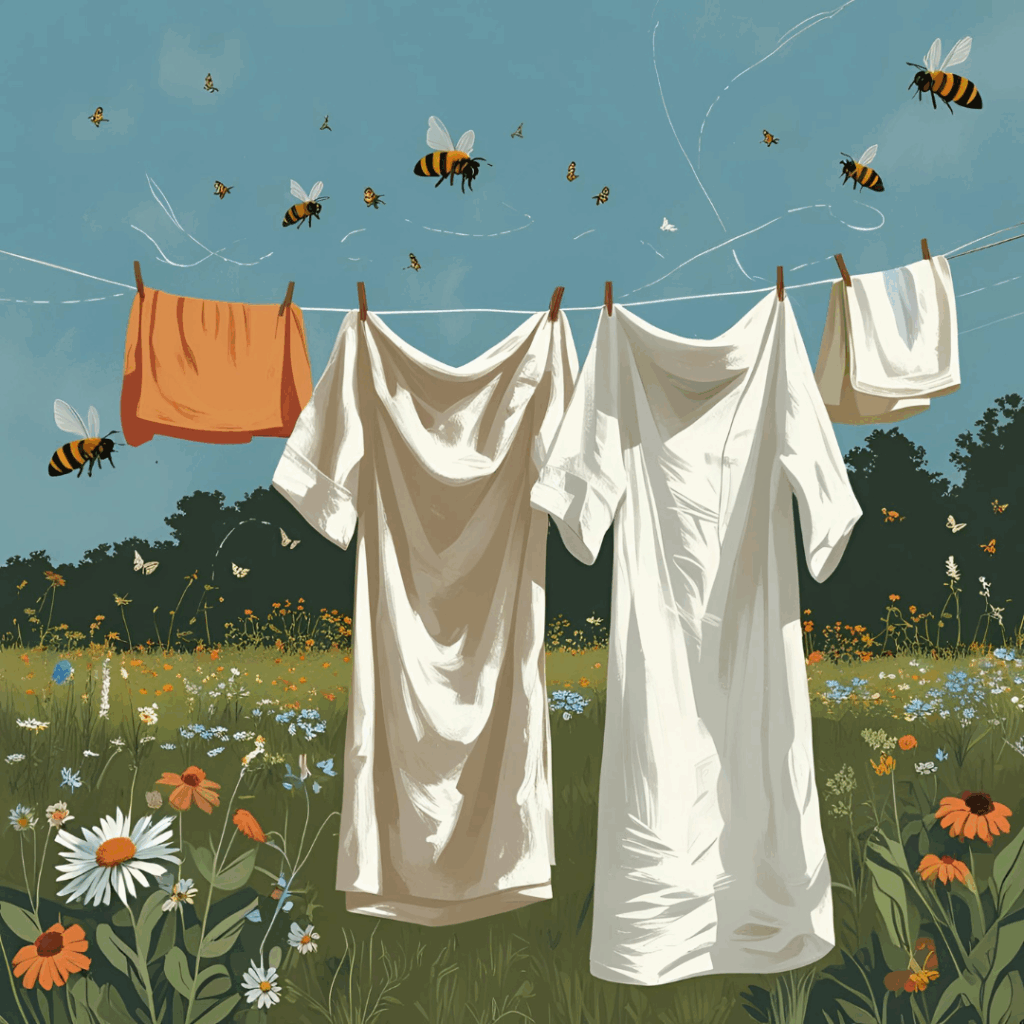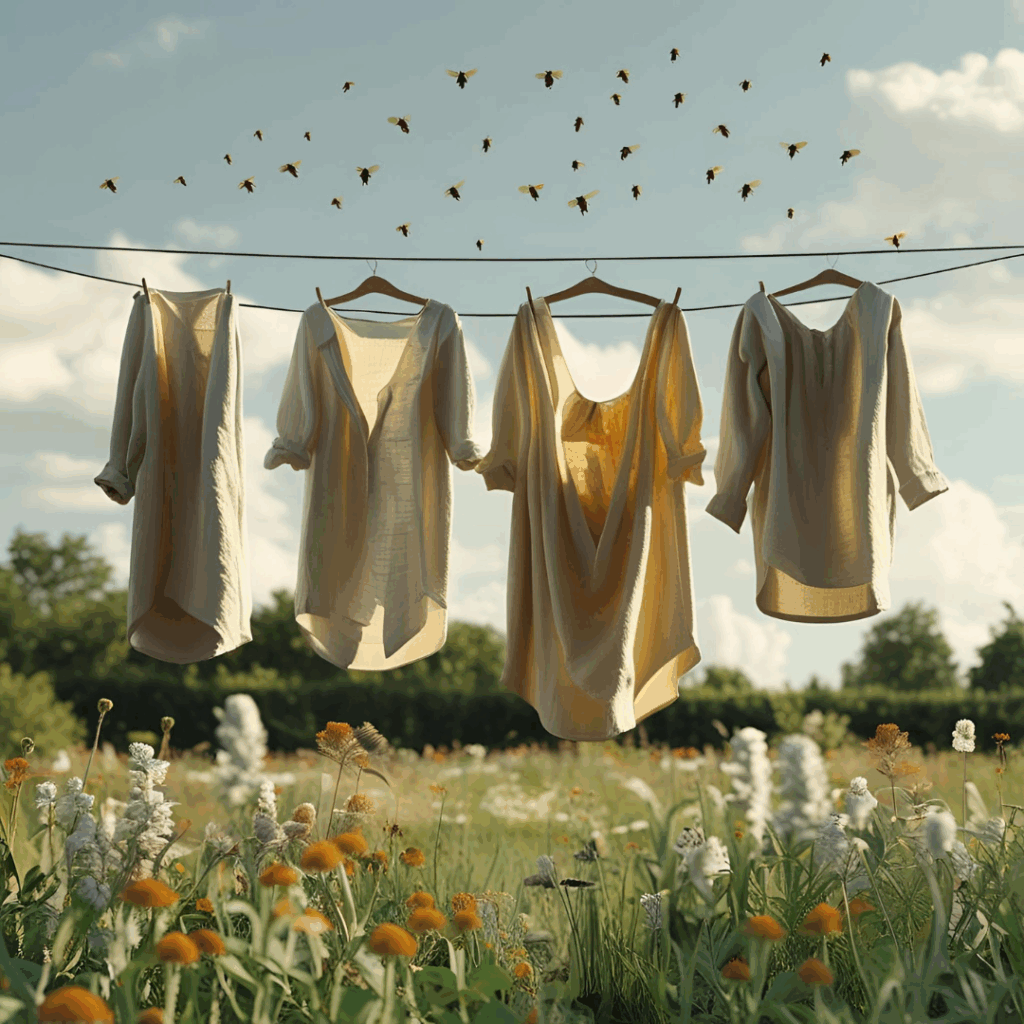Have you ever stopped to think about the impact of the fabric of your clothes on biodiversity? At a time when fashion is seeking sustainable and ethical solutions more than ever, linen is standing out as one of the most environmentally friendly natural fibers.
Produced from the stem of the flax plant (Linum usitatissimum), this ancient fabric offers not only style and durability but also significant benefits for biodiversity preservation — one of the greatest ecological challenges of our time.
In this article, we will explore in depth how linen relates to biodiversity, why it is such a positive choice for the planet, and how you can incorporate this noble and responsible fabric into your conscious consumption routine.
What Is Biodiversity — and Why Does It Matter in Fashion?
Biodiversity is the variety of life on the planet: animals, plants, fungi, microorganisms, and the complex ecosystems they form. It is absolutely essential for the balance of natural cycles, soil quality, crop pollination, availability of clean water, and even global climate stability.
Unfortunately, the fashion industry is one of the biggest threats to biodiversity, mainly through:
- Intensive pesticide use in conventional cotton farming, contaminating soil and water and affecting wildlife and pollinators.
- Deforestation for vast pastures for livestock (for leather production) or monoculture fiber farming.
- Severe water pollution caused by dyeing and chemical treatments that poison rivers and oceans, impacting aquatic ecosystems.
- Monocultures that impoverish soil, eliminate natural habitats, and reduce species diversity over large areas.
In this scenario, linen emerges as a lower-impact alternative, acting as a true ally of environmental regeneration.
Why Is Linen Considered a Sustainable Fabric?
Linen stands out among textile fibers for several characteristics that directly benefit the environment and life around its plantations:
- Low irrigation need: The flax plant is hardy and can grow with rainwater, requiring little or no additional irrigation.
- Minimal use of fertilizers and pesticides: Linen is naturally resistant to pests and diseases, minimizing the need for chemicals.
- High plant efficiency: All parts of the flax plant are used, from the stem (for textile fibers and cellulose) to the seeds (for linseed oil and food).
- Mechanical processing: Its transformation into textile fiber is mostly mechanical, unlike other fabrics that require intensive and polluting chemical processes.
- Crop rotation that improves soil: Linen cultivation enriches the soil where it’s planted, making it ideal for crop rotation, improving soil fertility and structure.


Additionally, linen is 100% biodegradable, meaning its decomposition at the end of its life does not release microplastics or toxic residues into the environment.
How Linen Promotes Biodiversity
Linen’s sustainability goes beyond cultivation efficiency. It actively promotes biodiversity:
- Preserves Natural Habitats
Unlike large monocultures (like cotton or soy), flax cultivation often happens in mixed or smaller areas without large deforestation. This allows native vegetation maintenance and the creation of ecological corridors that serve as wildlife refuges.
Also, linen is native to temperate regions of Europe and Asia, preventing the introduction of invasive exotic species that could unbalance local ecosystems.
- Less Pesticides = More Life in Soil and Surroundings
Linen production requires minimal chemical defenses, preserving life such as:
- Beneficial insects: bees, ladybugs, and other pollinators thrive in pesticide-free environments.
- Microorganisms: essential for soil fertility and health, ensuring it remains a living ecosystem.
- Wildlife: small animals dependent on uncontaminated plants and insects find a safer habitat.
In contrast, chemically intensive plantations kill pollinators and may generate “dead zones” in the soil, harming the entire local food chain.
- Strengthens Regenerative Agriculture
Linen is excellent for crop rotation systems, pillars of regenerative agriculture. This helps maintain agricultural diversity and soil health long-term, resulting in:
- Less soil erosion.
- Fewer resistant pests (reducing chemical needs).
- Greater ecological resilience of the agricultural system.
These regenerative practices create a balanced environment where diverse plant and animal species coexist with agriculture.
- Stimulates Conscious Value Chains
High-quality linen production, especially in traditional European regions (France, Belgium, Netherlands), often involves small farmers and cooperatives. Many prioritize fair trade and organic or low-impact methods.
This decentralized, ethical model values traditional practices and preserves local knowledge, which walks hand-in-hand with biodiversity protection and rural sustainability.
Fashion with Linen: Beauty, Durability, and Responsibility
Besides undeniable environmental benefits, linen is widely valued in fashion for its intrinsic qualities:
- High resistance and long durability: linen garments can last decades, reducing frequent consumption.
- Thermal comfort: its structure makes it ideal for hot climates, keeping the body cool and allowing breathability.
- Timeless and elegant style: a classic fabric that offers sophistication and impeccable drape.
- Beautiful aging: unlike many fabrics, linen becomes softer and more comfortable with each wash and use.
Being natural and breathable, it’s excellent for sensitive skin and those seeking a clean, rustic, or minimalist aesthetic aligned with a more conscious lifestyle.
How to Identify Responsible Linen?
When buying linen clothes or fabrics, look for seals and certifications that guarantee ethical and low-impact cultivation:
- EUROPEAN FLAX®: certifies traceable and sustainable linen from Western Europe.
- GOTS (Global Organic Textile Standard): for organically grown and processed linen without harmful chemicals.
- OEKO-TEX®: ensures the final product is free from substances harmful to human health.
Many vegan and slow fashion brands already work with sustainable linen in their collections, serving as good references.
Conclusion
Linen is much more than a textile fiber: it is a true ally of biodiversity and conscious fashion. Choosing this fabric encourages regenerative farming practices, protects vital ecosystems, and supports a more ethical and responsible production chain.
In a world facing environmental collapse and rapid wildlife loss, dressing consciously is a silent but powerful act of activism. Do your part, choose linen.
💬 Do you already wear linen clothes? Did you know it was so positive for the planet and biodiversity? Share your experience or questions here!
🔁 If this content helped you better understand fashion’s impact, share it with those also seeking more ethical and ecological fashion!







